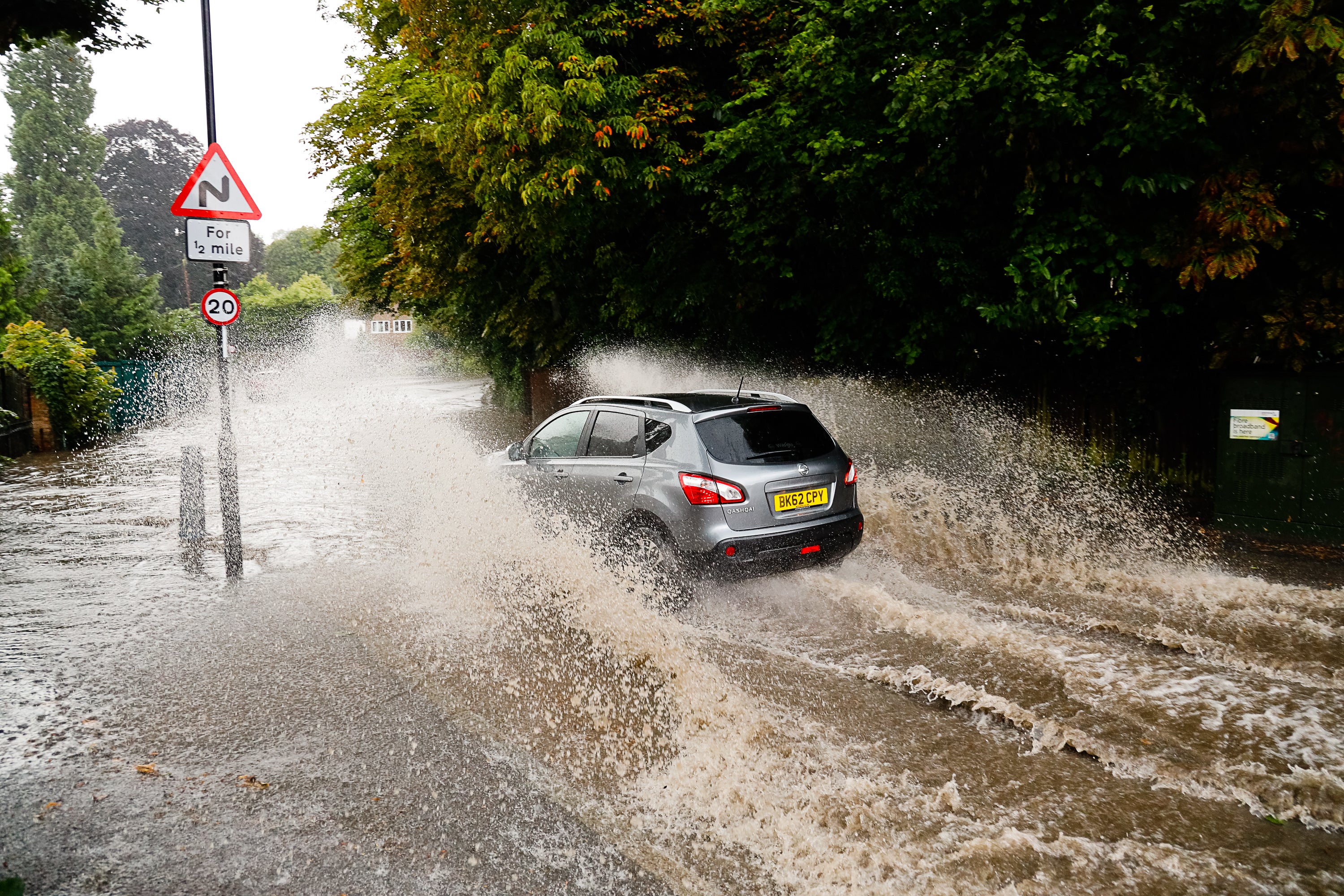Canon EOS R Review
Canon EOS R Review
We revisit Canon's first full-frame mirrorless camera
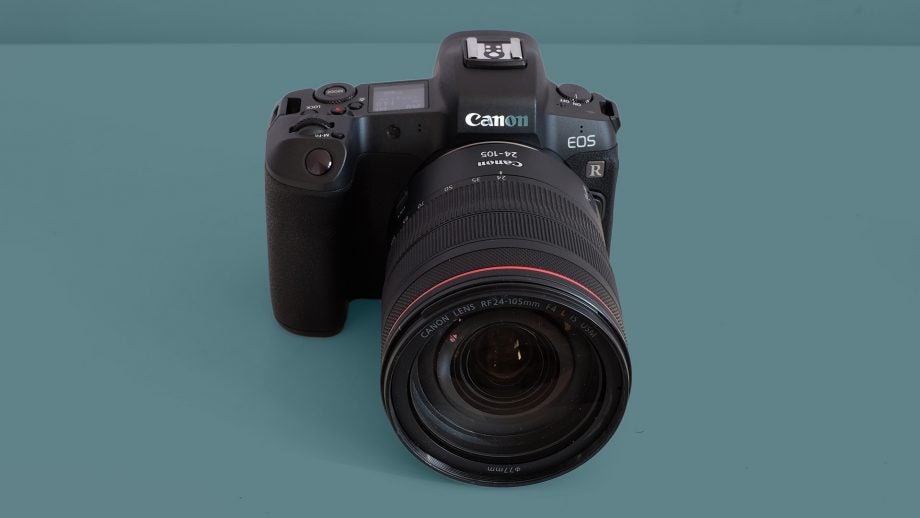
Verdict
A successful entry in the rapidly growing team of full-frame mirrorless cameras, if not the most complete in this class
Pros
- Great image quality
- Excellent EVF
- Full-frame images in an APS-C like shell
Cons
- No in-body stabilisation
- Not the smallest full-frame CSC
Key Specifications
- Review Price: £2349
- 30.3-megapixel full frame sensor
- 3.69 million dot EVF
- 3.15-inch 2.1 million-dot articulated screen
- ISO 100-25600
- 8fps burst
- Magnesium alloy shell
- Weatherproof
What is the Canon EOS R?
When it launched in October 2018, we declared the Canon EOS R to be a “great success”, despite some slight disappointment that it was closer to a mirrorless version of the Canon EOS 6D Mark II than the more advanced EOS 5D series.
It’s a great bit of kit: well made, intuitive and fast, shooting 30-megapixel stills at up to 8fps, and with phase-detection autofocus points that cover 88% of the width of the sensor and 100% vertically, with all of Canon’s experience showing at stratospheric ISOs – solid results at up to ISO 25,600 was pretty impressive.
So, ten months on, does it still measure up? Since the end of 2018, though, the mirrorless market has been moving at a frenetic pace. The Sony A7R Mark IV has been announced, for one thing, and Panasonic has thrown its considerable hat into the ring with the S1 and S1R, a pair of very tempting, well-made full-frame mirrorless cameras.
There are undoubtedly new mirrorless cameras hoving over the horizon in 2019 too, including rumours that Canon might be launching its own high-resolution 80-megapixel EOS R. So it’s just as well that the Canon EOS R has had a software facelift in the shape of a pair of firmware updates that address a few niggles the camera had when it was first released.
Here’s our fresh verdict on the EOS R, ten months on from when it arrived in the great mirrorless full-frame boom of 2018.
Related: Best mirrorless camera
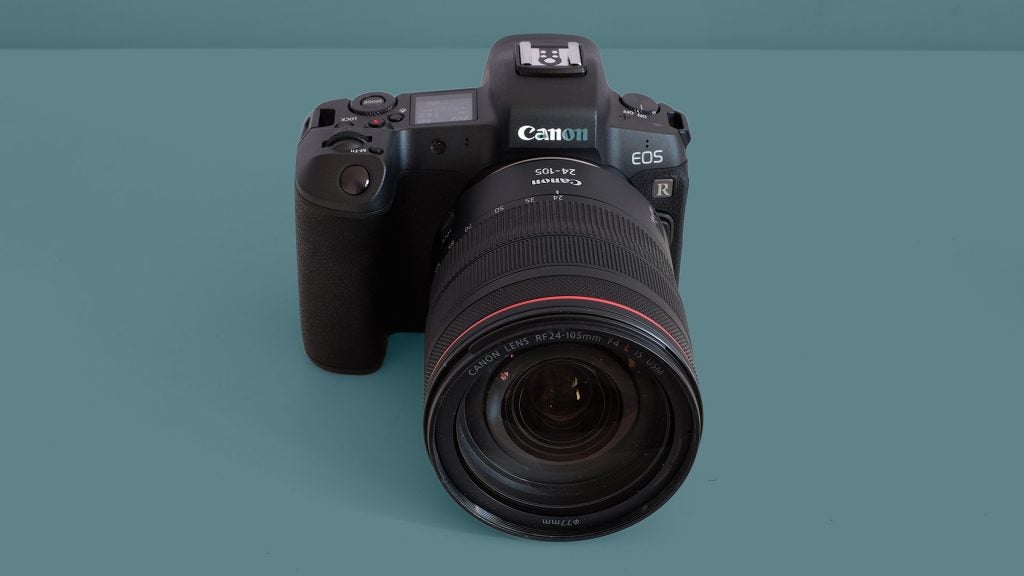
Canon EOS R – Design and Handling
Until all of about five minutes ago, most mirrorless cameras were easily distinguished from DSLRs. FujiFilm’s X-series models, Sony’s A series clan and Canon’s own M models all have skinnier bodies and grips than traditional DSLRs.
It makes sense: mirrorless cameras are meant to be smaller, more portable. They are the sort of camera you might take on holiday or for a walk out with the family, where setting up a shot on a tripod for half an hour wouldn’t go down well with your fellow travellers.
The Canon EOS R looks and feels a lot like a DSLR. It’s smaller than the Canon EOS 5D Mark IV, closer in scale to Canon’s APS-C sensors models.
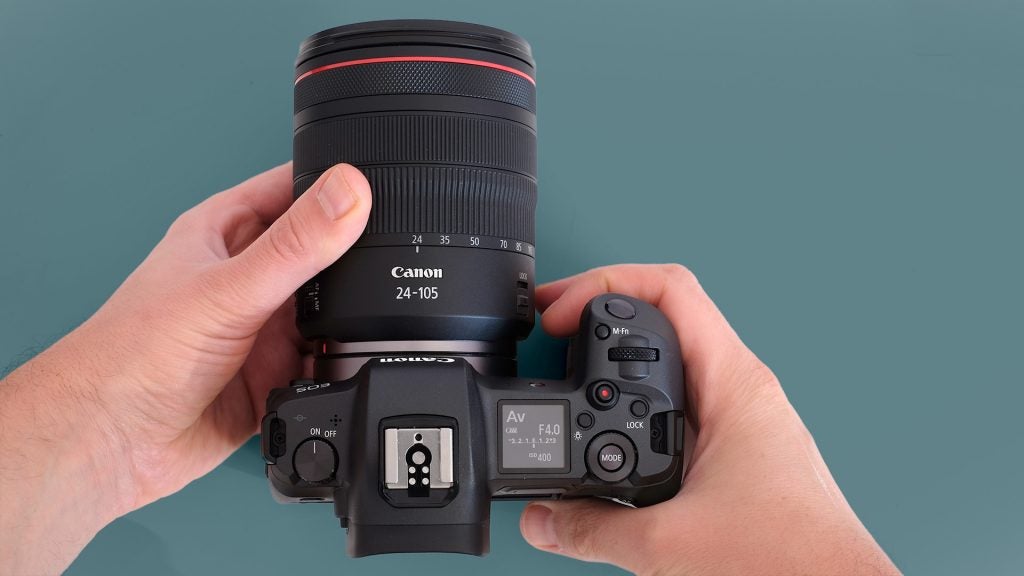
However, it is immediately clear that making the EOS R as small as possible was not top of the design priority list. This is backed up by its initial lenses too.
The kit lens, an 24-105mm zoom with constant f/4 max aperture, is not compact or light. This is probably not a set-up that will encourage you to take your camera out more often. And at launch there’s no alternative to the Sony Zeiss 35mm f/2.8, made for Sony’s A-series, which gets you close to this shooting style.
Portability of the launch lenses may not be great, but this is because Canon clearly wants the EOS R to appeal to its long-standing fans and semi-pro users. And some of its mirrorless APS-C models to date haven’t so far.
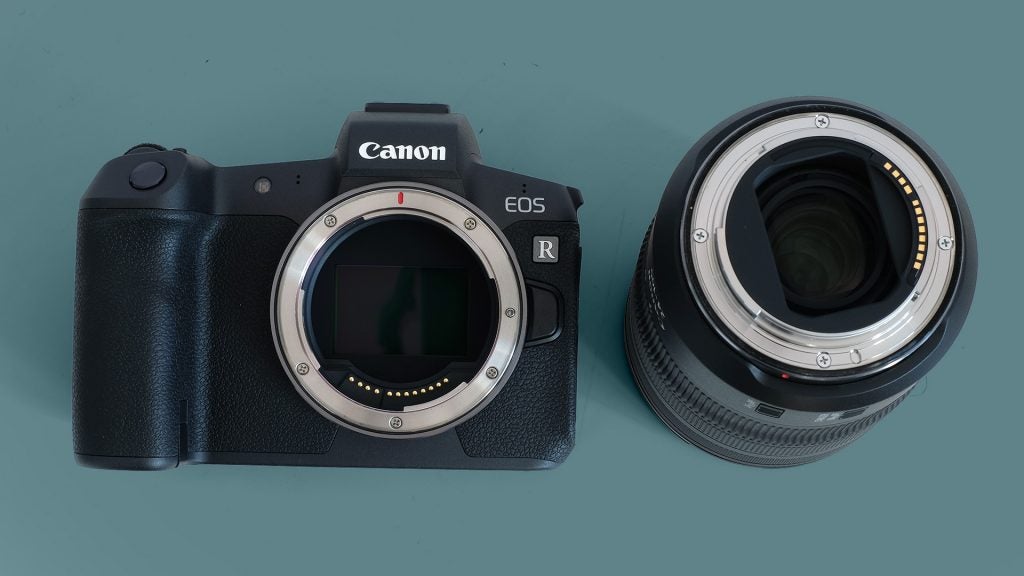
The Canon EOS R’s ‘classic’ sensibility comes with an impression of sheer quality. I may have ended up with a bit of muscle soreness in my weak little forearms after a while, but this camera is a joy to use.
Chunky settings dials that rest by your thumb and forefinger offer manual control more intuitive than that of most mirrorless cameras. And while the grip isn’t quite as ergonomic as my personal full-frame favourite, the Nikon D750, it offers a very sure, controlled feel.
There’s one slightly odd control. A capacitive slider sits by the EVF, on the back. This is a programmable control you need to assign manually. It’s handy for access while using the viewfinder, but I’ll admit I haven’t found an unmissable use for it in my own shooting.
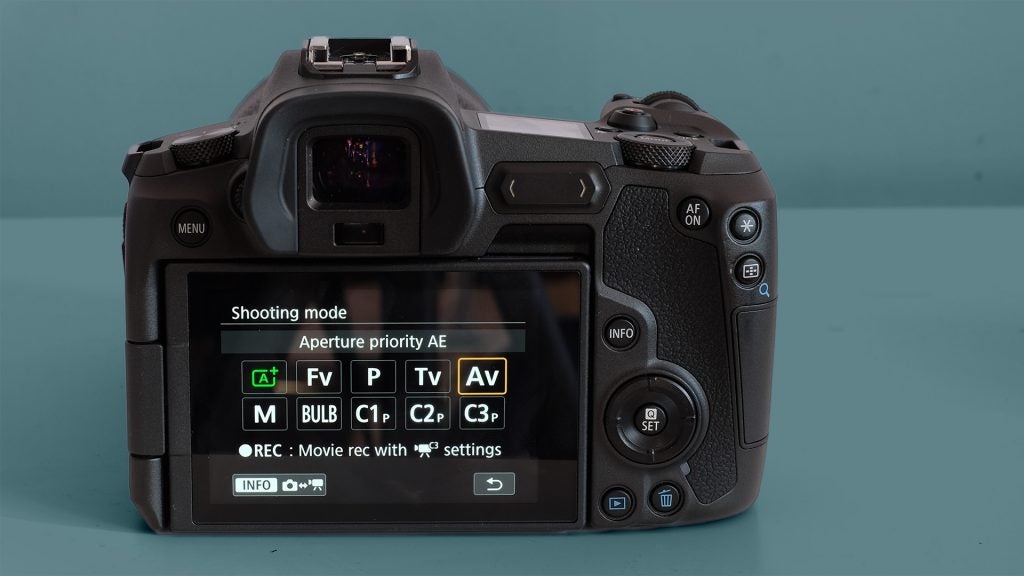
Related: Best DSLRs
Canon EOS R – Screen and EVF
The EVF is a personal tech highlight of the Canon EOS R. Its 3.6 million-dot OLED screen may only equate to 1280 x 960 pixel, and higher resolution EVF panels do already exist – earlier in 2018, Sony announced an EVF module with 5.6-million dots. But the EOS R’s is really great.
It’s sharp and clear enough not to seem like a compromise next to an optical viewfinder. There’s no obvious OLED saturation, no overbearing pixellation and the size of the preview image is great, even if the Nikon Z6 offers greater magnification.
It’s also an excellent ultra-low light focussing tool, as the image brightens hugely beyond what you’d see through a traditional optical viewfinder at night. Focus peaking is available too, and you can choose the thickness of the crisp focus outline and its colour. Manual focussing feels good too.
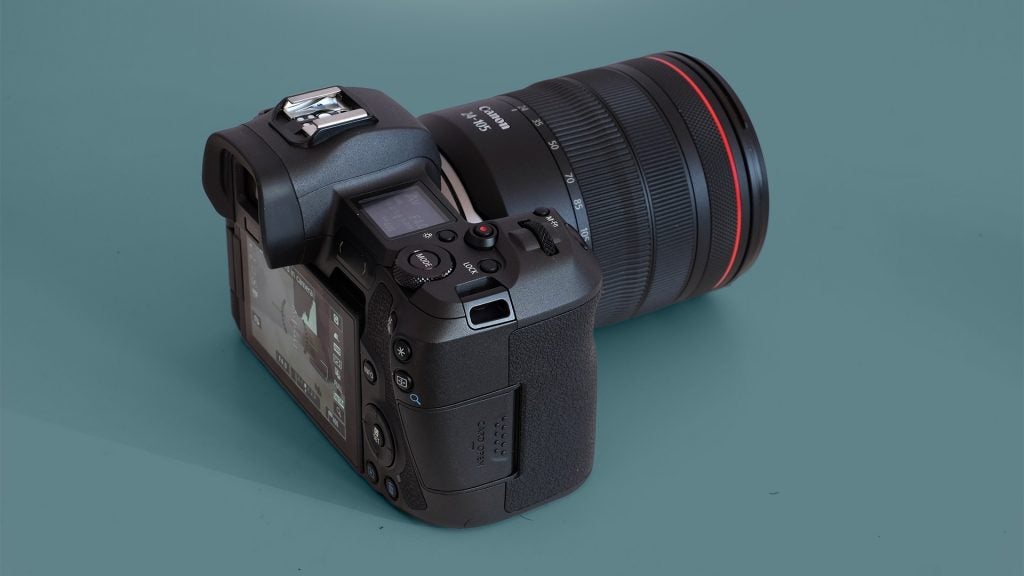
Canon’s 24-105mm ‘standard’ lens has a pleasant, smooth manual focus wheel along its barrel. The Canon EOS R switches quickly between the rear screen and EVF using a proximity sensor on the back, like every camera in this class.
That rear display is a 3.2-inch LCD with an articulated screen. I find this less useful than a simpler flip-out one as it’s slightly slower to use, but it’s more flexible, particularly for vlogging. It folds out on an arm, and can point in front of the camera, making it better for image review at a strange angle.
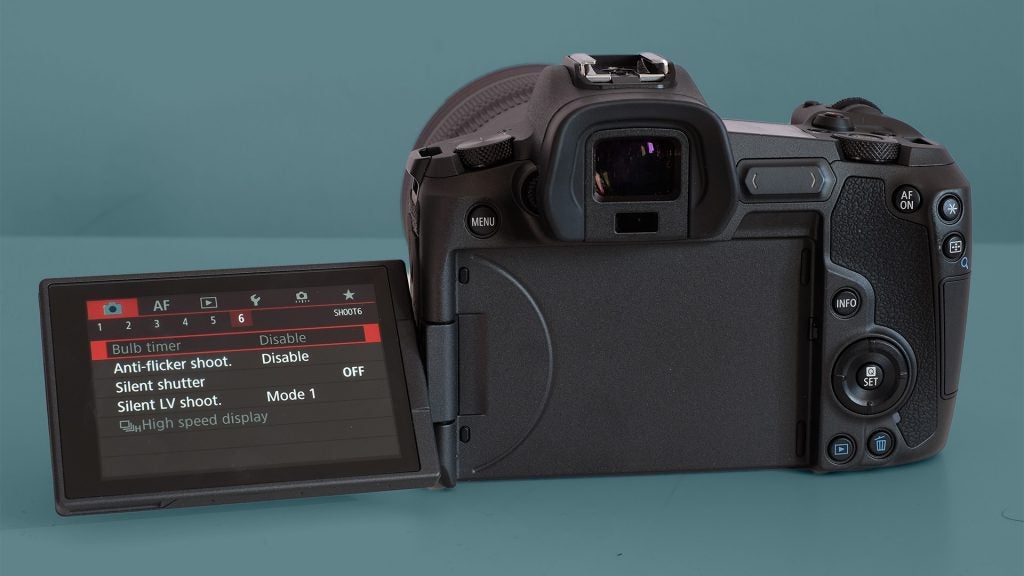
However, as I noted about the size and shape of the EOS R body and lenses, it may not be the best fit for quick and agile street photography. Walking around with the display poking out to the side also makes me feel like an early ’90s dad on holiday with a camcorder.
Related: Best free Lightroom presets
Canon EOS R – AF and Performance
If you’ve looked at the Canon EOS R’s specs in some detail, it may seem like a game of autofocus Top Trumps. This camera has 5,655 focus points, a ridiculous number considering they use phase detection, not the generally slower contrast detect form of AF.
The Canon EOS 5D Mark IV has 61 focus points, only 41 of which are the more accurate cross-type.
You can use the D-pad or the touchscreen to select focus. Using the D-pad feels more natural in a camera of this size, and more accurate too. Being able to select more-or-less any area in the entire frame is great, though in most situations you don’t really feel the benefit of that huge array of focus points.
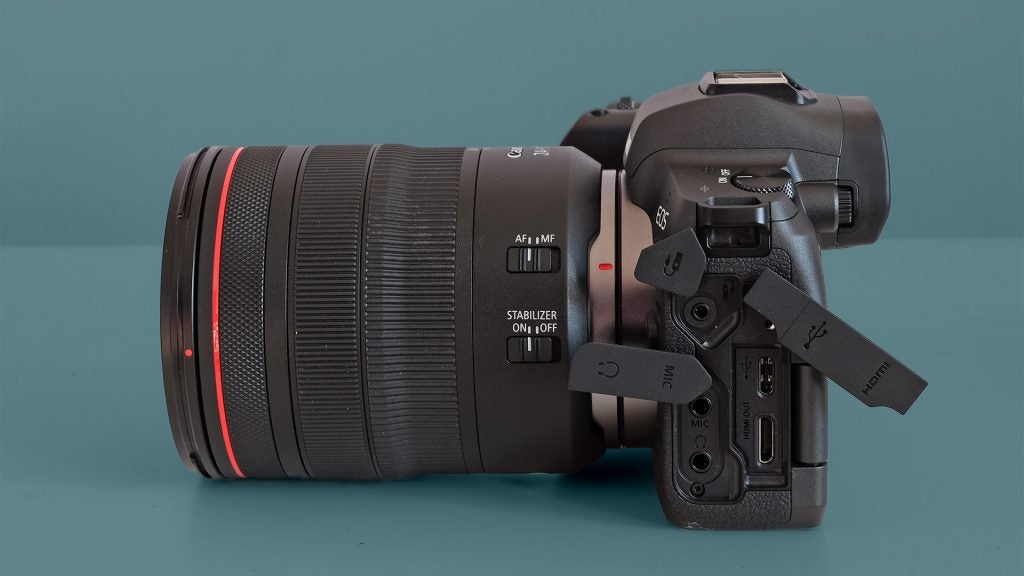
I moved to the zone focus after starting with single-point focussing, as it lets you zip across the field more quickly. Perhaps a control other than the D-Pad would suit the AF system better. That said, if you want to focus on something small in the foreground, the specificity of all those points may come in handy.
The Canon EOS R’s focussing performance is excellent. It’s near-instantaneous in most lighting conditions, and is reliable right into near pitch-black. The EVF excels here too, giving you a much clearer view of the scene than your eyes can provide, particularly if they have not yet adjusted to the gloom.
Canon says the EOS R can focus in -6EV, or near-black. That’s darker than its own claim for the EOS 5D Mark IV, of -3 EV.
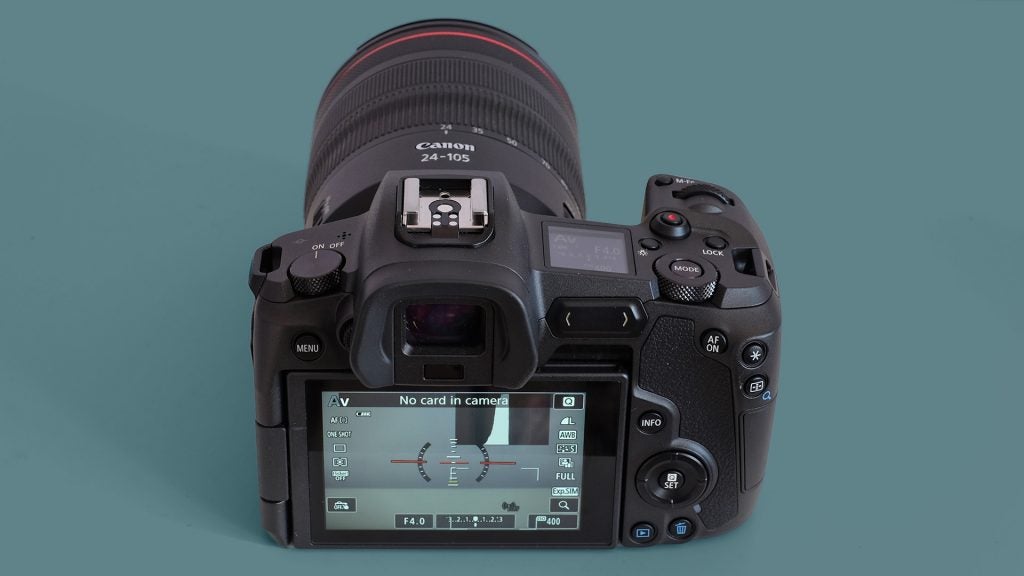
With firmware version 1.2.0, released in April 2019, the EOS R’s already excellent autofocus system has been given a kick in the shins. Eye detection works as well as before, but can now be used at the same time as continuous autofocus.
It’s inarguably a feature that should have been there from the beginning, but its addition brings the EOS R a little closer in its performance to that of the A9. For portrait photographers, and for wedding photographers shooting the happy couple as they make their way down the aisle, it’s a useful addition.
It’s slightly faster during burst shooting too, with 8fps to the Mark IV’s 7fps. Using a stopwatch, shooting for five seconds, I measured 7.6fps from the EOS R. This is, of course, when shooting JPEG images rather than RAWs.
Thanks to an earlier firmware update (version 1.1.0, fact fans), the EOS R can shoot continuously using its silent shutter mode. I’ve given this a go, and wedding photographers should be pretty pleased – in 10.2 seconds the EOS R shot 51 images, or 5fps, making a click roughly as loud as a quiet egg timer counting down.
You need to be careful, though. The EOS R’s silent shutter mode disables the mechanical shutter curtains in favour of a purely electronic shutter, and we found that even very slight movement could produce distorted verticals in our images. That means fast moving subjects and pan shots are best avoided, and that the Sony A9 remains the camera to have for fast, continuous, silent shooting, thanks to its lightning fast sensor readout.
The cache is not completely inexhaustible when shooting JPEGs. It first seems to stutter around the 18-second mark. However, it does carry on shooting with momentary pauses to offload some of the data onto your SD card.
Press that shutter button and you get a satisfying DSLR-style clunk, though there’s also a silent mode if you want to be more discreet.
Related: Best cameras
Canon EOS R – Connections and Weather Sealing
There’s just the one SD card slot on the Canon EOS R, where the 5D Mark IV has a compact flash slot too. However, just as it’s time for traditionalists to stop saying electronic viewfinders are trash, most of the benefits of CF have been minimised by progress in SD cards.
And at least there’s no chance of bending any interface pins with SD. The SD slot is actually higher spec than the EOS Mark IV’s too, as it supports UHS-II rather than UHS-I.

The rest of the Canon EOS R’s ports and connections sit on the other side, under a series of rubber flaps. There’s the remote trigger plug, external mic and 3.5mm for audio monitoring, a USB-C for transferring files and on-the-go charging, and an HDMI mini output.
Like all of Canon’s top-end DSLRs, the EOS R is weather sealed. These seals seem perhaps a little less heavy duty than those of the EOS 5D Mark IV. However, using the EOS R in rain should be no problem as long as you use a weatherproof lens.
Canon has included the full gamut of wireless features too: GPS, Wi-Fi and, less of a dead cert, Bluetooth.
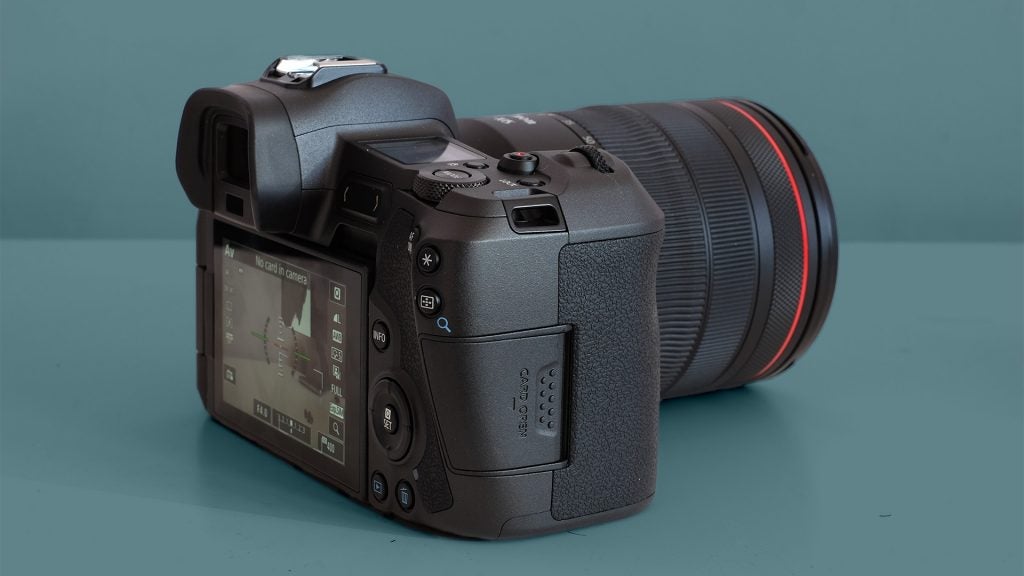
These let you remote-control the shutter using your phone or tablet and the companion app, and also send images directly to some wireless printers.
There is one missing feature. The Canon EOS R does not have in-body image stabilisation, which feels like a significant loss when the Sony A7 III has 5-axis, 5-stop stabilisation.
The 24-105mm lens claims to have five stops of stabilisation too, but I was not hugely impressed by the experience when really stretching it with longer handheld exposures.
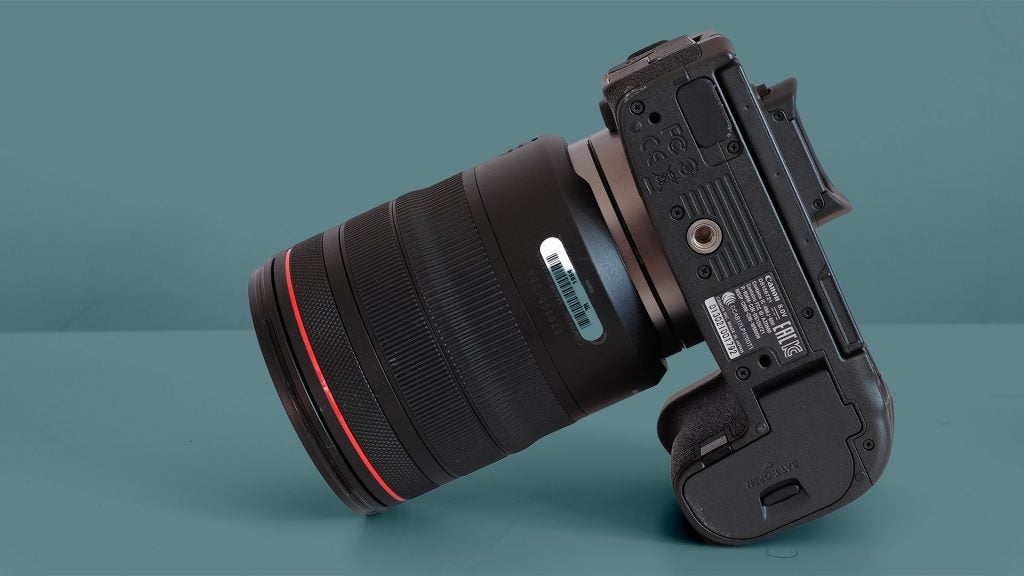
Related: Best photo editing apps
Canon EOS R – Image Quality
The Canon EOS R has a 30.3-megapixel full-frame sensor, reportedly one based on the sensor used in the Canon EOS 5D Mark IV.
The base ISO is 100, and the native ISO range tops out at 40,000. This can be expanded down to ISO 50, and up to 51,200 and 102,400 in absolute emergencies.
As you’d hope from a full-frame camera with a sensor similar to that of the 5D Mark IV, the EOS R gives you masses of scope to pull seemingly non-existent detail out of shadow areas of an image. That’s without the image-ruining noise or contouring you’d see after doing so with a smaller-sensor camera.
I’ve primarily used the ‘kit’ 24-105mm lens, which is fairly sharp. But Canon has even tastier goodies on offer: its prime lenses.
In the EOS R’s lab tests, fine detail only really started to fall away after ISO 6400. And despite the introduction of more noise at higher ISOs, the EOS R was capable of resolving good detail right up to ISO 40,000. You can get solid results from the EOS R at up to ISO 25,600, consistent with a large, high quality sensor.
I’d still recommend trying to keep ISO to 1600 or below to maintain the most post-shoot edit flexibility and cleanest crops, but the image-quality reasons to buy a full-frame camera are all apparent here. Its noise performance is very good. That said, ISO 12,800 is the absolute upper limit of what I’d want to shoot regularly, and its extended ISOs are best avoided.


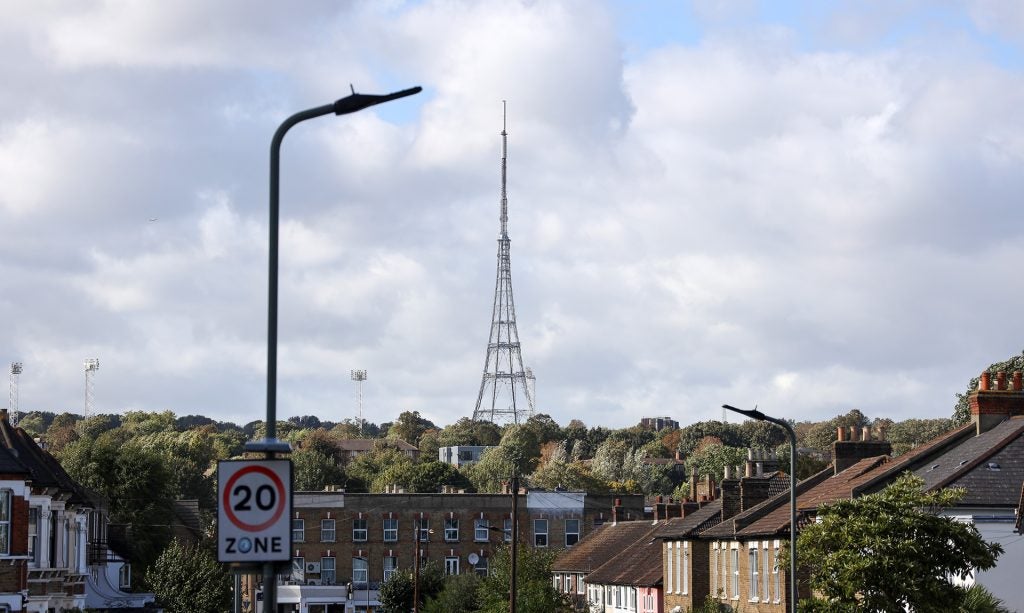
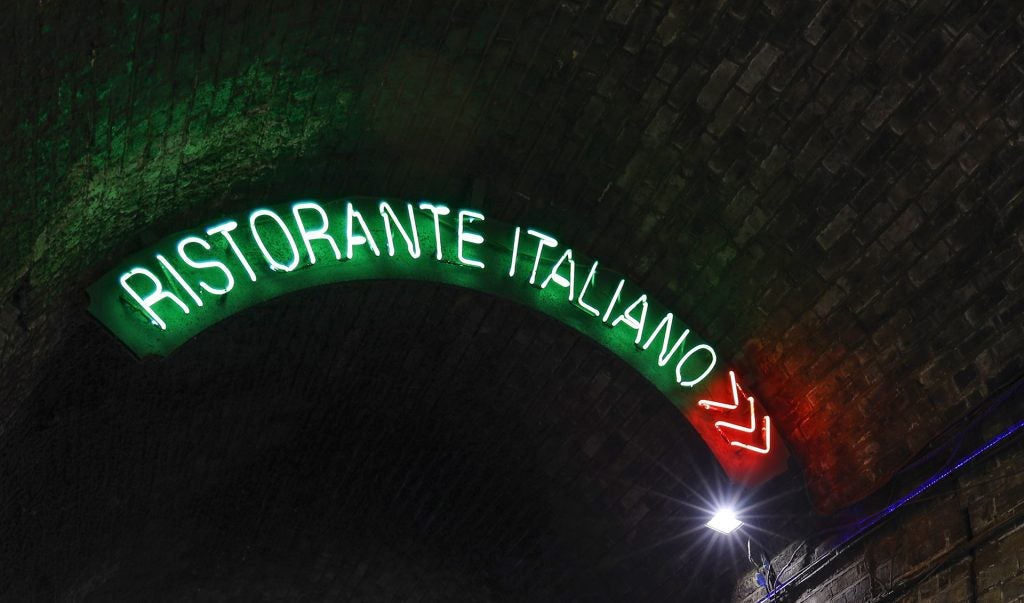
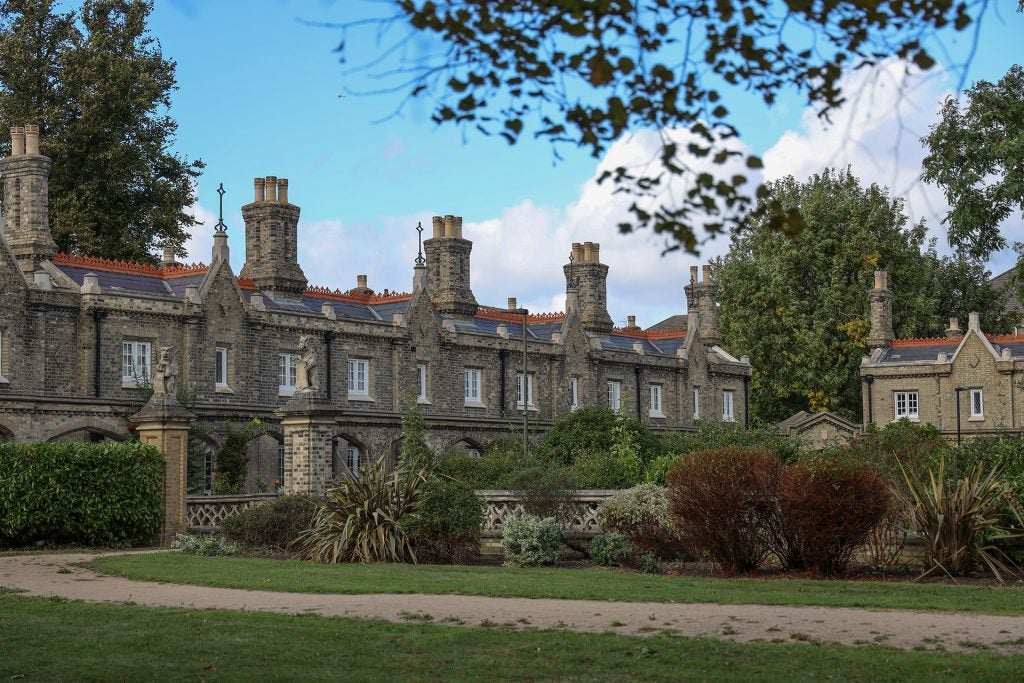
Canon EOS R – Video
The Canon EOS R should be a great compact system camera for video – it has most of the required features too. However, there is the odd issue.
You can plug in an external mic to capture better sound than the stereo built-in array is capable of recording. Capture goes up to 4K resolution, 30 frames per second or 1080p, 60 frames. There’s also a 100fps slo-mo, although this is only available at 720p resolution.
The EOS R can output 4:2:2 uncompressed footage over HDMI, and the Canon Log mode offers a flat colour profile to maintain maximum dynamic range for more effective grading.
It has all the good bits, bar two important elements. The lack of in-body stabilisation is again important here, just as it is when shooting stills. Sony’s A7 III can shoot at 4K, and its body is stabilised.
The EOS R also crops into the frame during 4K capture. When shooting stills, you have the option of a pretty wide-angle view with the 24-105mm lens. Switch to 4K and, zap, it’s effectively gone.
Both of these are reminders the EOS R is very much a first-generation Canon full-frame CSC.
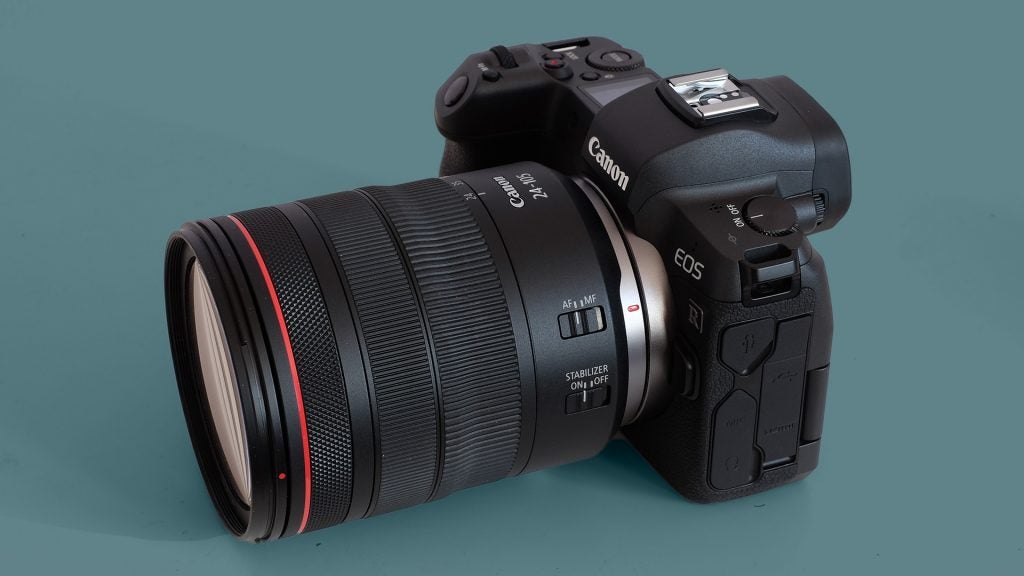
Canon EOS R – Battery Life
The Canon EOS R uses a traditional-style camera battery. You can take it out and replenish it using the dedicated charger, or do so with the USB port on the camera’s side.
Canon rates the battery at 370 shots, as per the CIPA standard. This is significantly lower than the Sony A7 III’s 650-shot rating. But judging by our experience, you should be able to get more shots out of a charge on a shooting day (around the 400-mark), if not quite as many as its Sony rival.
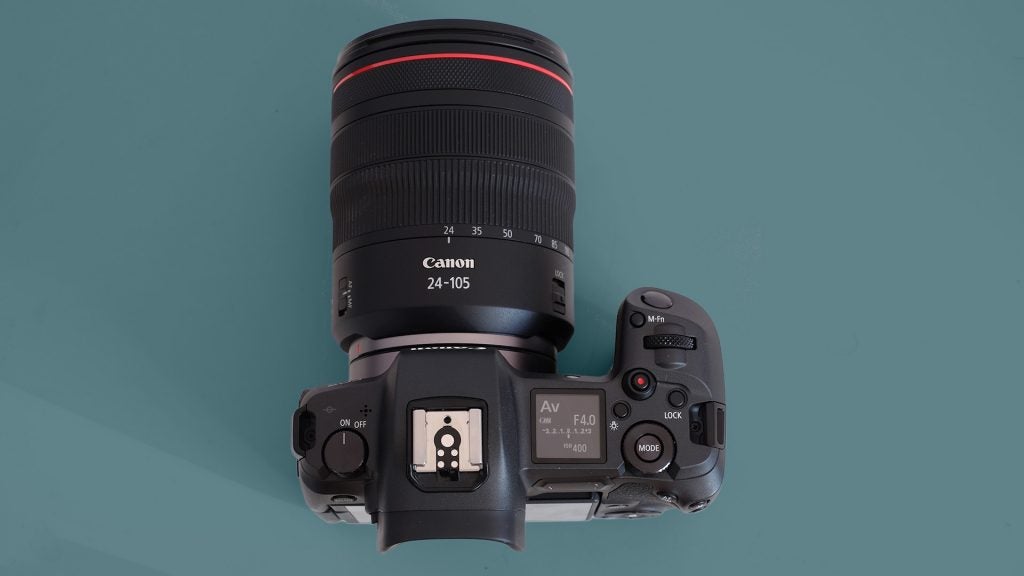
Canon EOS R – Lenses
The introduction of the EOS R brings with it a new lens mount, necessitated by the much shorter distance between the lens mounting flange and the sensor itself, a feature of all mirrorless cameras. This is a good thing – the closer the rear element of the lens is to its sensor, the less refraction you get, and the better images will (theoretically) be at their edges.
The ‘kit’ lens – and the most logical choice for first-timers – is Canon’s RF-mount 24-105mm f/4 lens. It’s a great walk-around bit of kit, with a sensible amount of zoom and integrated image stabilisation. It’s also incredibly sharp, producing pro-quality images at every aperture. At £1,029 it’s not cheap, but the RF lineup is burgeoning beautifully. There’s the 10x zoom 24-240mm f/4-6.3 (£899), for example, a great travel zoom, while portrait photographers will find themselves magnetically drawn to the 85mm f/1.2 short telephoto (£2,799).
Of the current crop of RF lenses, I’ve tried the 24-105mm f/4 and the interesting 35mm f/1.8 macro (£498). The 24-105mm is a cracker of its type – fast to focus, extremely (extremely) sharp and nice to handle. It’s a chunker at 700g, although that’s nearly 100g lighter than Canon’s L-series 24-105mm f/4 Mark II, giving credence to Canon’s claim that the short throw between the sensor and the mount will allow RF-mount lenses to weigh less than their DSLR counterparts.
The 35mm f/1.8 is a lovely little macro lens – small, light (305g) and quick. It’s fixed wide-angle focal length makes it less of a natural choice but its ability to focus close (17cm from the camera sensor) gives it an interesting blend of utility and novelty.
Hesitation about lens choice isn’t a dis-qualifier for investing in the EOS R. Apart from the lenses already available, a 70-200mm f2.8 is coming soon, plus a 15-35mm f/2.8. For everything else, the included mount adapter, allowing you to mount EF lenses (and crop-sensor EF-S lenses with an automatic in-camera crop to account for the smaller image circle), gives you compatibility with Canon’s stunning range of pro and amateur glass.
Compared to other systems, Canon’s native choices for its RF mount put it on-par with most other systems – Nikon offers a similar number of lenses and, like the EOS R, provides an affordable FTZ mount to allow to to fit legacy glass. Sony offers a striking number of lenses for its Alpha system, and sports professionals should note the recent arrival of lenses such as its 400mm f/2.8, 600mm f/4 and 200-600mm f/5.6-6.3.
Why buy the Canon EOS R?
The EOS R remains a self-assured entry into the full-frame mirrorless market for Canon. It’s not quite a pro camera, although a few of its recent firmware upgrades – autofocus tracking in its eye-detection mode and continuous shutter release while using its silent shutter focus – will certainly elevate it in the eyes of a few pros, wedding photographers not least among them.
For hobbyists, it’s a stunner, and its compatibility with not just Canon’s new range of RF-mount lenses and its legacy EF-mount glass will be the icing on the cake. Competition, not least from Nikon and Sony, remains stark, though, meaning those who aren’t already bought into the Canon family have a very tough choice to make.
Still, there’s a lot to like here, though, including good handling, a fantastic electronic viewfinder (the best on any Canon camera) and a comprehensive autofocus system.
Related: Best Canon lenses
Verdict
A successful entry in the rapidly growing full-frame mirrorless camera space, if not the most complete in this class


